Trip Report: Equatorial Guinea
Visited in January 2024
If I had to name the country I was least looking forward to on my trip to every country in the world, I would probably have said Equatorial Guinea. This small country in Central Africa seemed to combine pretty much everything awful that you are confronted with as a tourist.
At least that was the case a few years ago. Equatorial Guinea is considered one of the most corrupt countries in the world and I kept hearing horror stories from tourists who were targeted by the police, army or other authorities in the country. The country is also not known for having any must-see tourist attractions. On top of that, it had one of the most difficult and expensive visas in the world.
Fortunately, Equatorial Guinea introduced an e-visa in 2023, which allows tourists to enter the country for only €75. After other countries with difficult visas, such as Eritrea, Angola and Saudi Arabia, have massively simplified their entry requirements in recent years, Equatorial Guinea has now followed suit. And it worked: I received the e-visa after just four business days. It was quite tedious to get all the documents into the right format, but with such a short processing time, I can’t complain.
Although it was pretty easy to get the visa, I still wasn’t too excited. The name of the country alone gave me the shivers. Equatorial Guinea. It is one of four countries with “Guinea” in its name. The others are: Guinea, Guinea-Bissau and Papua New Guinea. And I didn’t particularly like any of them. Guinea would even be in my worst three. Not too good omens for Equatorial Guinea…
My flight from Cotonou landed in the capital city Malabo on a Saturday afternoon. Immigration was easier than expected and without any incidents worth mentioning. The only funny thing was that the immigration officer asked me to write the phone number of the ibis hotel on my arrival card. As there is only one ibis in Malabo and perhaps 20-25 hotels on the whole island of Bioko, I found this request a little narrow-minded, but okay…
It still doesn’t sound as bad as you’d imagine arriving in the country you were least looking forward to, does it? Well, it wasn’t all perfect. My driver wasn’t waiting for me in the arrival hall. There was a certain irony to the whole thing, because the guy who promised to pick me up insisted that his price (XAF 10,000, i.e. about €15) was only valid for one hour. In other words, if my flight is late or I dawdle around too long, I’ll have to pay more.
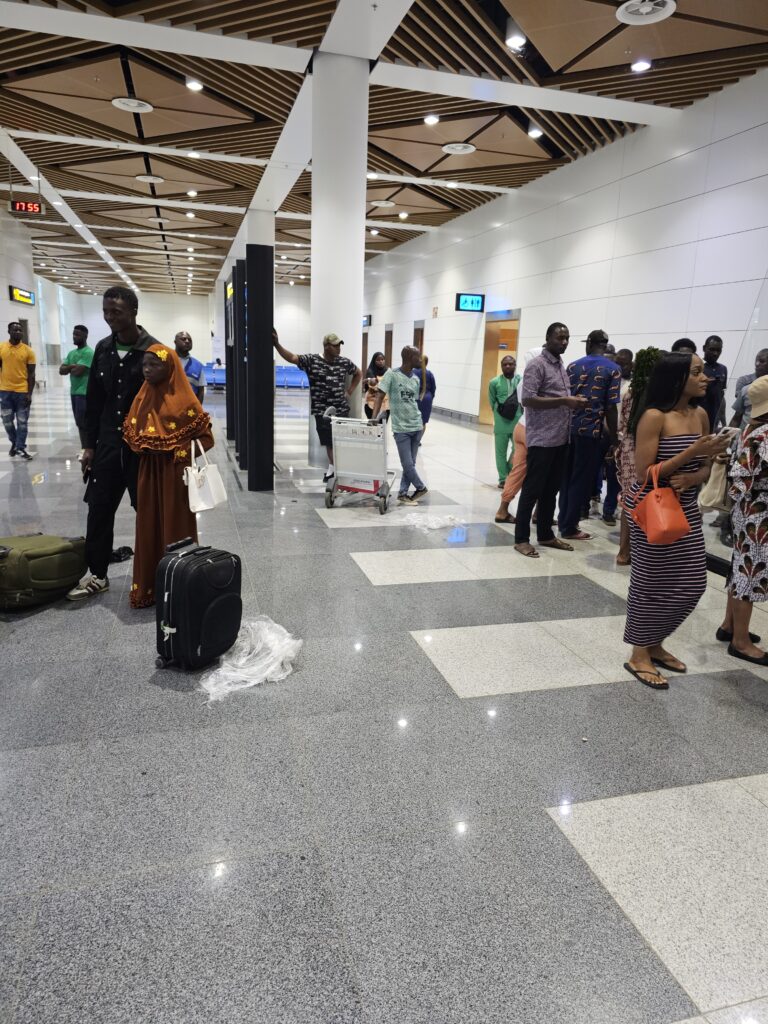
After waiting for twenty minutes, I was finally able to get the airport’s wifi password and send my driver a message. He assured me that someone was on the way. Another 25 minutes passed and slowly but surely I got fed up. When another taxi driver told me that he would take me into town for XAF 5,000, half the price of what the other guy quoted, I didn’t have to think twice. The only problem was that I still had a tour ahead of me with the guy who should have picked me up. So I had to hope that the next day would get better…
The short drive from the airport to the ibis hotel left me amazed. What I saw was probably the best infrastructure I have ever seen in Africa. The highway could just as easily have been in a country like the UAE or Singapore. But that was no coincidence either, because I had just arrived in one of the richest countries in Africa. My country number 166, mind you.
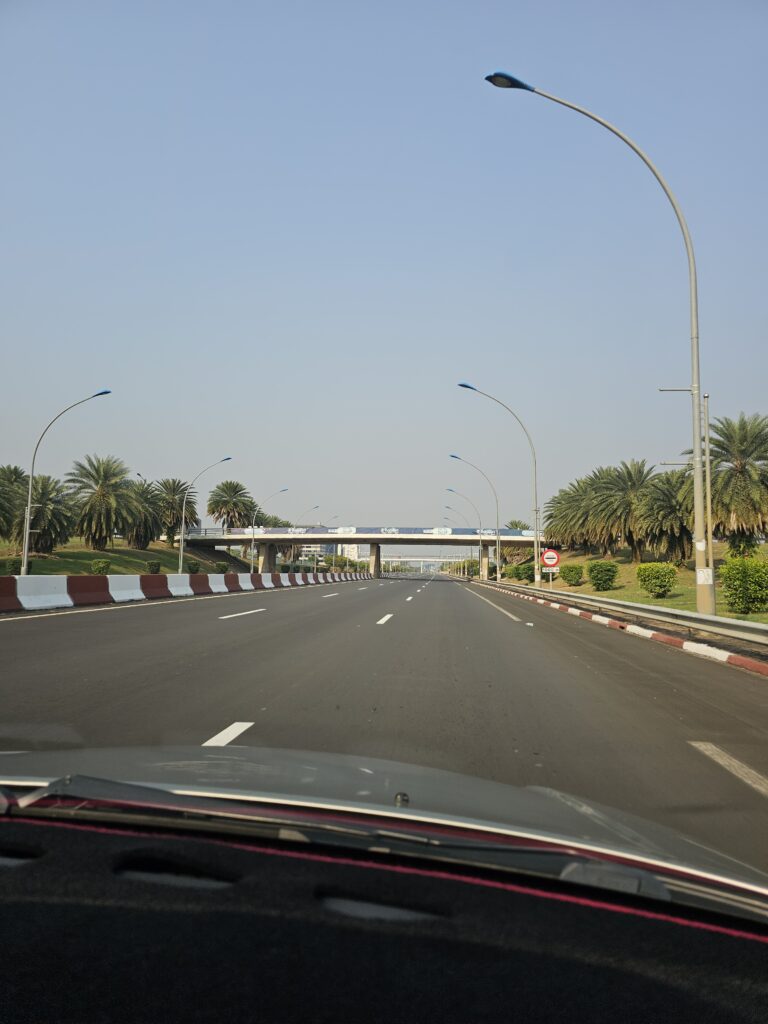
Equatorial Guinea is an oddity in many respects. First of all, it is the only Spanish-speaking country in Africa. In addition, the capital Malabo is located on an island off the coast of Cameroon. The much larger part of Equatorial Guinea lies to the south, sandwiched between Cameroon and Gabon. Despite its name, the country is not located on the equator but just above it.
Equatorial Guinea also has one of the longest ruling heads of state in the world. Teodoro Obiang Nguema Mbasogo has ruled the country since 1979, after overthrowing his uncle in a coup. Mbasogo is a classic dictator and the inhabitants fear him. Although elections are held, they are a joke because Mbasogo always wins them by a huge margin. His son and future successor is also known for squandering Equatorial Guinea’s money in European capitals.
Although Equatorial Guinea is one of the richest countries in Africa thanks to its oil reserves, it also has one of the worst Gini coefficients, which measures the distribution of wealth. In other words, a very large part of the population lives in poverty, while the elite live in opulence. And to come back to the president, his best buddies include the leaders of North Korea, Kim Jong-un and his late father Kim Jong-il. His daughter even grew up in North Korea and speaks the language fluently.
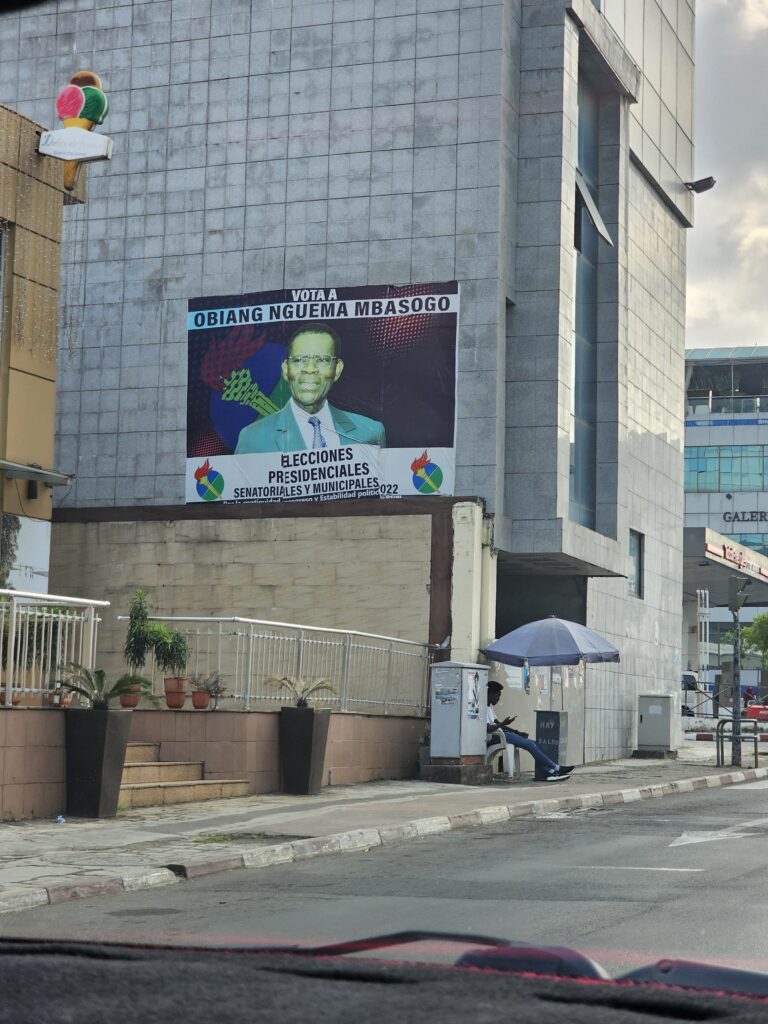
As soon as I had wifi back at the hotel, I received an apology message from my driver because the airport pick-up had gone wrong. I hoped that it would be better the next day, because tour guides in Equatorial Guinea are one of those things… As the country has hardly any tourists, there are practically none of them. And the few that are available charge more for a tour than you would pay in a country like Norway.
There is Hector from Rumbomalabo, for example. As I understand it, however, he is not a real tour guide but a middle man. His prices are in the upper premium segment and I found him to be rather unmotivated in his conversations with me. I had the feeling that he wanted to get rid of me straight away by indirectly telling me that Equatorial Guinea was too expensive for solo travelers.
Then there is Augustine, to whom Hector passes on his customers. Augustine wanted €500 for a 2-day trip around Bioko Island. I have received feedback from some who have used his service that they would not recommend him. Unfortunately, there doesn’t seem to be another known guide in the country.
However, someone I follow on Instagram gave me a contact named Eulogio, the guy who was supposed to pick me up from the airport. Eulogio is not a real tour guide, but rather a driver who – and this combination doesn’t seem to be so common in Equatorial Guinea – speaks English. I wrote to Eulogio and asked him if he could drive me around the island. The price he asked for was somewhere between €300-€500, which is definitely more than I’m willing to pay for a day trip.
I told him that I would pay a maximum of €150 and what I would get for it. He answered that he would take me around the island for that price and listed about six stops. Some interesting places, such as Ureka, were not on the itinerary, but that was okay for me. The important thing was simply that I could see the island. However, if you plan to use his service, ask him to add stops such as Ureka or Pico Basilé.
Eulogio turned out to be a super nice guy, so I forgave him the unfortunate start at the airport. Together we drove around Bioko Island in his car in the counter-clockwise direction. It was a beautiful, sunny day, excellent for an excursion.
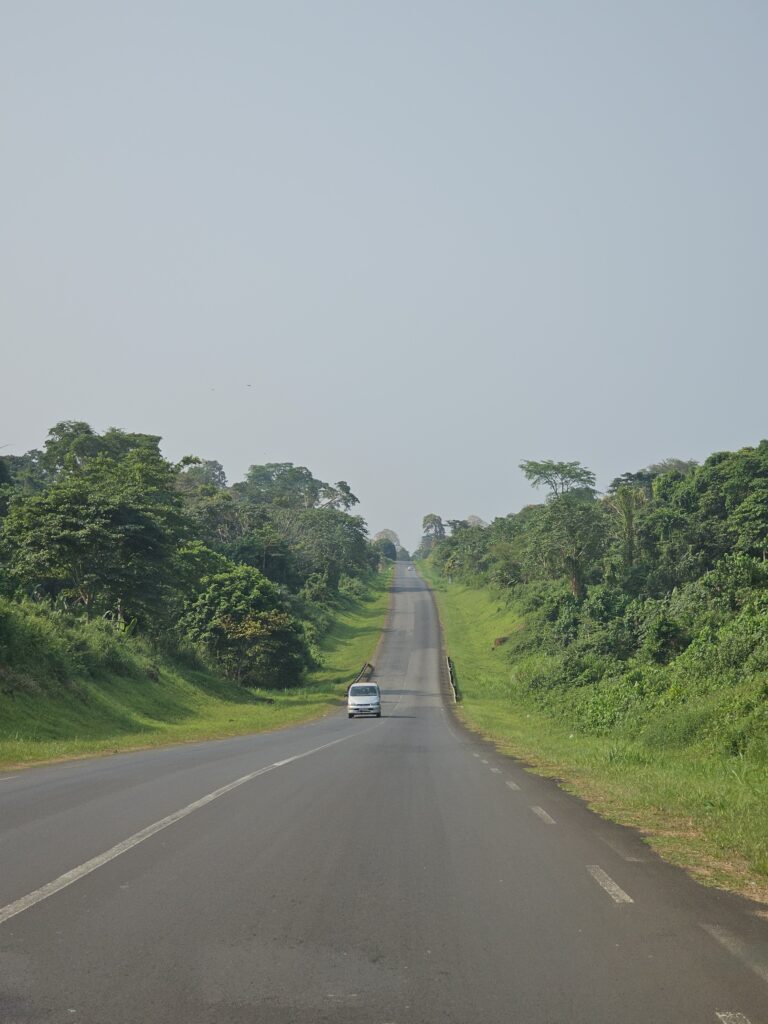
It takes less than three hours to drive around the island. There are various checkpoints on the way where you have to show your passport to the police. I didn’t have mine with me and simply showed my ID card once. The police accepted that. A few years ago, that would have been a reason to get a fine as a tourist. But those times seem to have changed.
Equatorial Guinea is another country that has realized that it cannot rely on oil revenues forever. The country is therefore looking for other sources of income and tourism is expected to help. Equatorial Guinea still has a long way to go before the country can call itself touristy. However, the order has probably come from the very top that tourists can no longer be harassed. How else can you attract new ones?
So, what does Equatorial Guinea look like? Bioko is a very green island. The roads are not only flawless on the way from the airport to Malabo, but all over the island. The infrastructure really doesn’t look like you would expect it from an African country and the whole Bioko island feels more like a Caribbean destination.
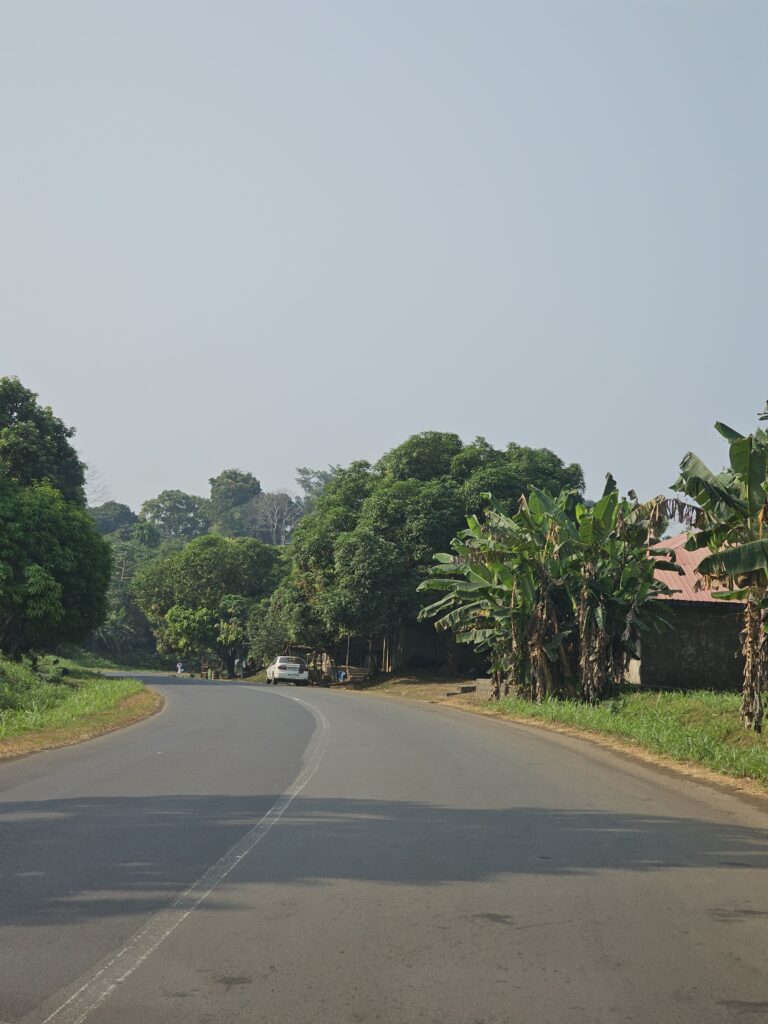
Due to its geographical location, I expected Bioko to be similar to São Tomé, which is not far away. However, Bioko is less tropical than São Tomé. What do I mean by that? In São Tomé, I saw palm trees, exotic plants and lots of colorful flowers along the roadside. Bioko definitely doesn’t look like that. Also green, but without me being a plant expert, most of the trees and bushes didn’t look much different to the ones you see in Europe.
As in other Central African countries, bush meat is sometimes offered at the roadside. I saw an African porcupine hanging by the roadside and took a few photos of it. The owner must have thought I wanted to buy it, because she shouted something at me and then came closer until she saw that I was getting back into the car.
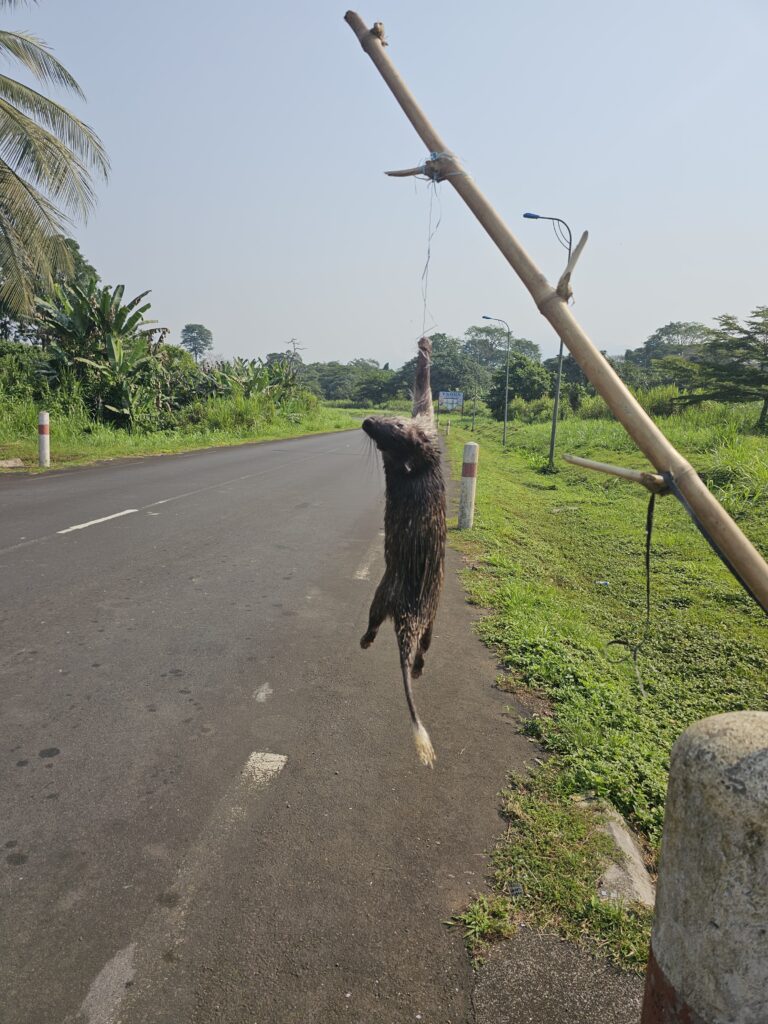
Besides, I would have liked to visit Pico Basilé, the highest mountain on the island and in the whole country (3,011 meters high). You don’t even have to hike up, as there is a road leading up. Unfortunately, you need a permit to go to the peak and Eulogio said that you have to apply two or three days in advance. As our tour took place on a Sunday, he said that it was too late for that now.
Pico Basilé is a matter of luck anyway. Bioko is a mountainous island and the mountains are often covered in fog. Therefore, it is not guaranteed that you will have a good view from the top. On this day, you could already see from below that there was a lot of fog at the top, so I guess I didn’t miss anything.
The focus of my tour was definitely on beaches, as I saw three of them. The most beautiful was also the first stop, namely Playa de Arena Blanca. Even though the sand here wasn’t as white as the name suggests and there was quite a lot of garbage, I found this beach pretty appealing all in all.
Later we saw the black Riaba Beach in the south of the island and Sipopo Beach, about 15 minutes from Malabo. It is mainly the inhabitants of Malabo who visit the beach in Sipopo, as it is closest to the capital. Unlike the other beaches on the island, you have to pay an entrance fee there and the party atmosphere there wasn’t my thing at all.
By the way, there was another somewhat bizarre place near Riaba, the Hacienda Marcos. This place is a gigantic complex and can be described as a mixture of hotel, amusement park and vacation residence of the president. True to the motto “bread and circuses for the people”, the president has created a resort for the inhabitants of the island.
When we were there, there were hardly any people and I think I saw more employees than guests. There is a restaurant, but the Western European prices put me off eating there. I guess, this restaurant and also the hotel are places that only the elite of the country can afford.
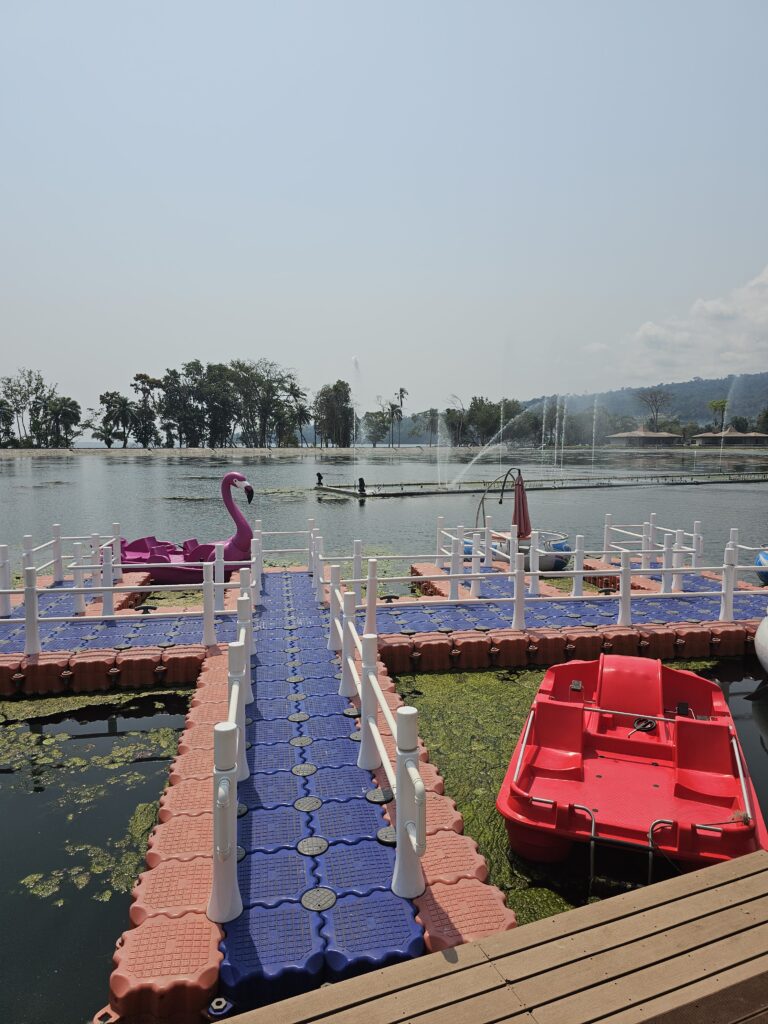
I also saw a few small villages on the island and Eulogio wanted to show me a large bridge, which I didn’t find particularly remarkable. But apparently some tourists find it interesting.
On our way back to Malabo, we made a stop at the Sofitel in Sipopo. Nice hotel, no doubt, which even has a small private beach. In addition, we saw the national football team from Equatorial Guinea there. If money is no issue, I can definitely recommend the Sofitel. There used to be one in Malabo itself and they are currently building a new one in the capital.
Speaking of which, what were the people like during my trip? I’ve heard from a few people who have had negative experiences with the locals in Equatorial Guinea. I had a minor incident when a local became aggressive because he felt I had taken his photo. However, Eulogio quickly cleared up this misunderstanding and explained that I had taken a picture of the flag on the house behind.
We have finished our tour in Malabo. There we visited the Paseo Maritimo, the promenade of Malabo. As is usual in dictatorships, you can find a gigantic flag pole there. There is also the usual “I ❤ Guinea Ecuatorial” tourist sign. But to be honest, although I’ve written this a little sarcastically, the Paseo Maritimo is a nice place and well worth a visit.
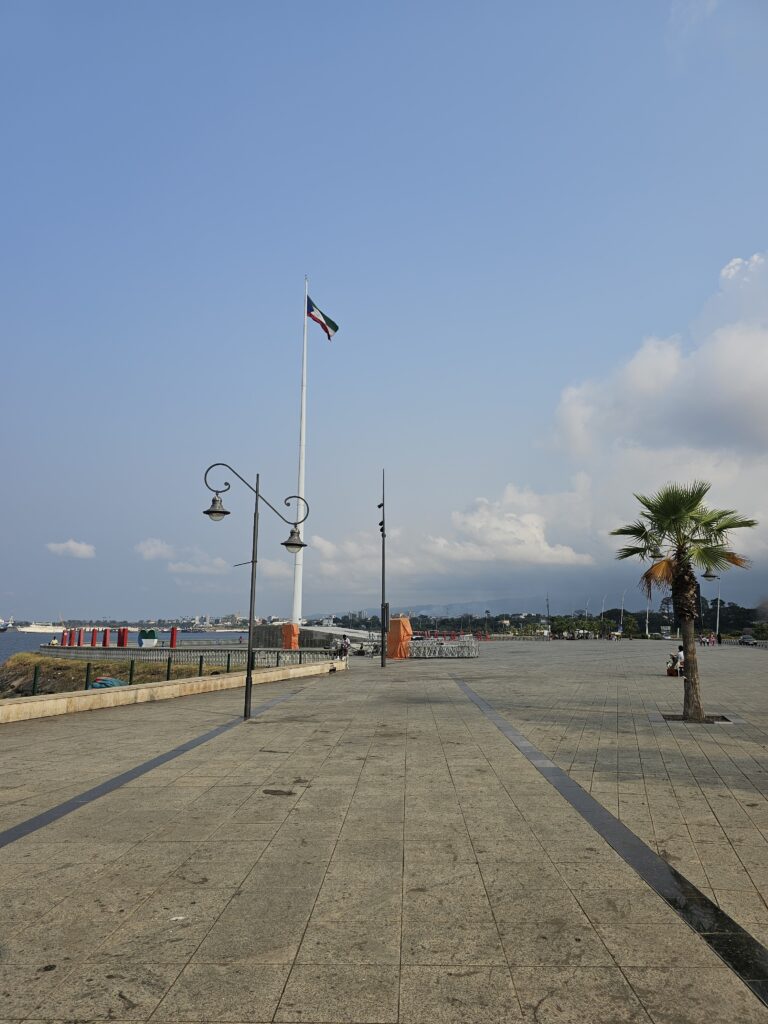
The whole tour didn’t take very long. We started at 9am and I think we finished before 4pm. So there would have been plenty of time to see other places. For example Ureka, which is usually described as the most beautiful place on the island. If you spend the night there in a tent, you can see hatching turtles at this time of year. Sounds interesting, but paying €500 for a 2-day tour like this wasn’t worth it to me in the end.
You can also see Ureka on the one-day tour if you organize a permit in advance. Plus, you can check out the Mirador del Lago Biao near Moka. This involves a hike of several hours, though. So I guess, I missed the most beautiful places on the island, but that was okay. I was mainly interested in getting an impression of the island and it’s not the end of the world that I did not see the umpteenth waterfall, crater lake, viewpoint or beach. At least it wasn’t worth the expensive tour prices to me.
My conclusion about the tour is nevertheless positive. I saw a good part of the island, was impressed by the quality of the infrastructure and found Bioko quite beautiful – although not as beautiful as São Tomé, which was secretly my hope. Eulogio was a nice and pleasant driver and his English was excellent. So if you’re looking for someone in Bioko Island who can show you the island, don’t hesitate to contact him (Whatsapp: +240222620882).
The next day I spent some more time in Malabo. To be more precise, I first went to the national park near the airport. This park was built as a recreational area in the middle of the city. It is sort of a huge botanical garden. A beautiful and peaceful place to visit.
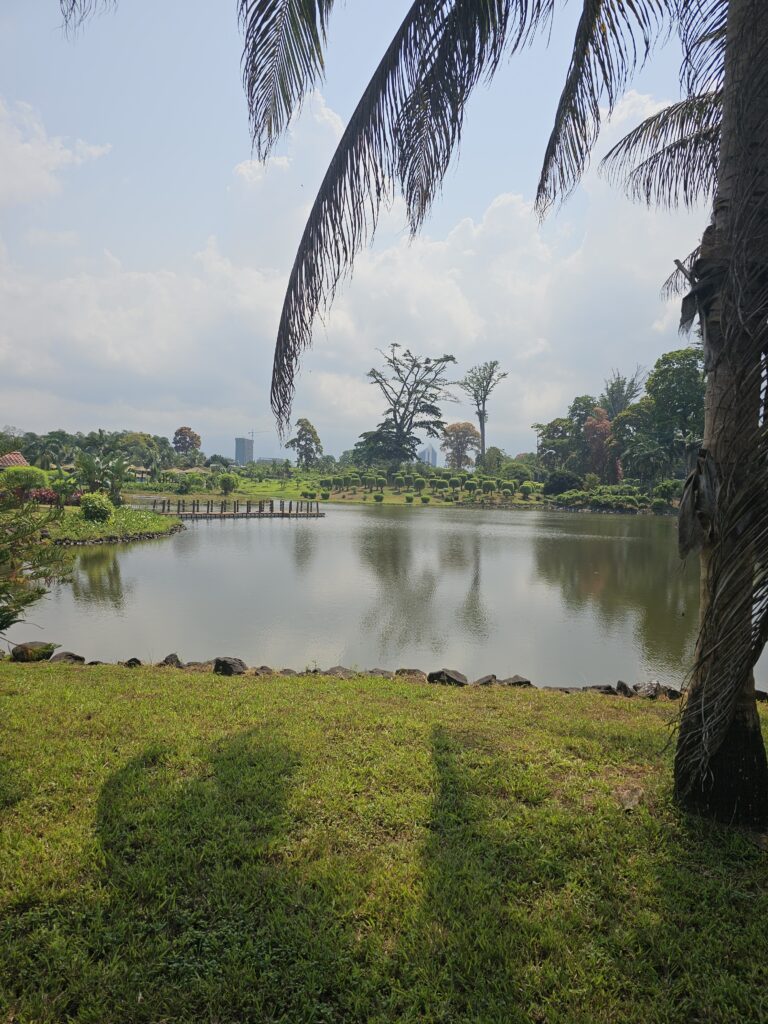
Here you can also see the Ceiba tree, the national tree of Malabo, which is also featured in the country’s flag. These large, massive trees can be seen all over the island. I spent about an hour in the park. It requires more time to see all of the national park, but it was simply too hot for me to stay longer.
Later, I spent the afternoon in Malabo and visited the St. Elizabeth’s Cathedral, apart from the promenade the only attraction in the capital city. I found Malabo not very exciting and one of the least interesting capital cities in Africa. At least, there are a few good cafés and restaurants in the city. However, I have heard of people who have spent all their time in Equatorial Guinea in Malabo. That is in my opinion a very boring trip.
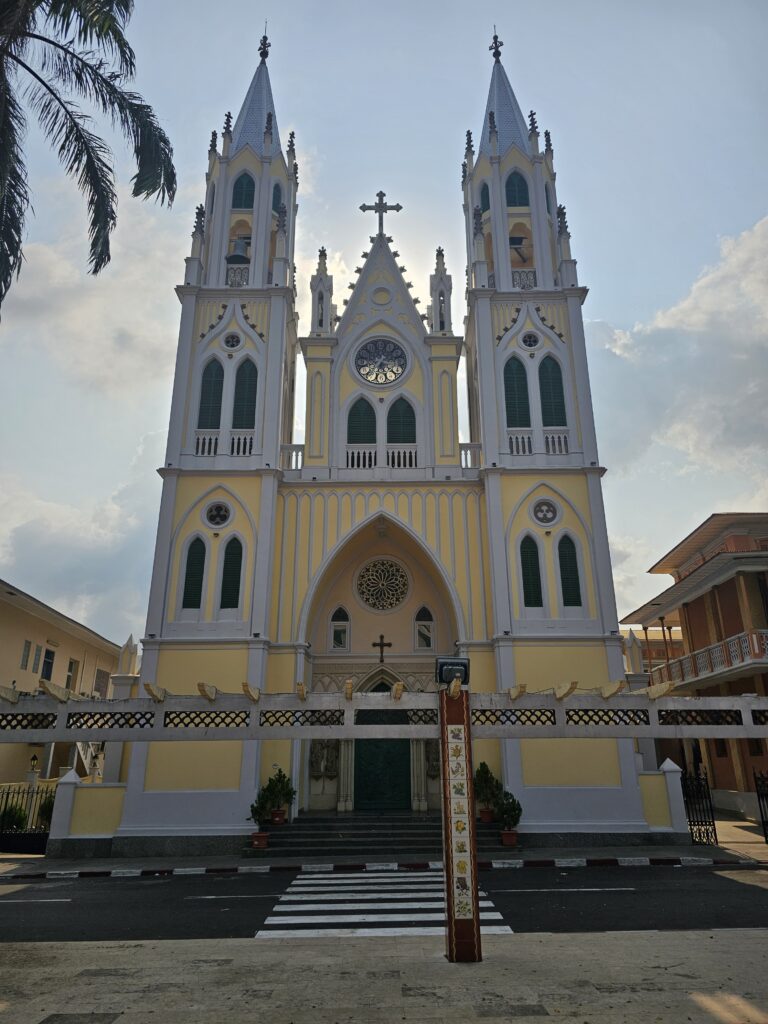
By the way, I always used taxis to get around in Malabo. Taking a taxi in Equatorial Guinea is another thing. The taxis are black cars with a white number. You wave them over, tell them your destination and then pay 500-1500 XAF. I never negotiated and simply paid what the driver wanted. After all, the prices were pretty cheap.
However, the taxis work more like an Uber pool. Sometimes there are already people sitting in them, sometimes people get in or out. In one case, I was on my way from Malabo to the hotel, about a 10-minute drive. But because several more people got in and one wanted to go to the airport, it turned into a 30-minute ride or even more, which was a bit annoying but part of the experience.
Communicating with the locals was not always easy. Having traveled in French-speaking countries for a week beforehand, I found it extremely difficult to switch to Spanish. So it sometimes happened that I just answered with “oui”. Funnily enough, some people in Equatorial Guinea also speak French, English or Portuguese. However, the locals all speak Spanish to each other and not in a local language. Why is that? Because there are various local languages and Spanish is the only one that everyone understands.
I left Equatorial Guinea on my third day, having spent a little over 48 hours in the country. Was the country really as bad as I feared? No, definitely not. I wouldn’t say that Equatorial Guinea was a highlight, but my stay on Bioka Island was actually quite okay. Thus, saying that Equatorial Guinea was the country I was least looking forward to was unjustified. I think it’s true that Equatorial Guinea is undergoing a change and is more friendly towards foreigners than it was a few years ago.

Would I recommend Equatorial Guinea to others? Certainly not to travelers who don’t have much experience in Africa. For the time being, Equatorial Guinea will remain a country that is only for the absolute hardcore traveler. But among those there will certainly be some who think the country is not so bad. Just like me. At least among the countries I visited on this trip, Equatorial Guinea would take second place behind Benin, but I definitely liked it better than Central African Republic and Cameroon.
Equatorial Guinea was my 44th out of 54 countries in Africa by the way. That means there are only 10 countries left, including four more from Central Africa (Chad, Gabon and the two Congos). Perhaps some people who have been following this trip have shaken their heads because I visited these country very briefly. But after 44 African countries, I’m not too keen on spending a week in each one. Africa is tiring and I’m slowly but surely reaching the point where I’m looking forward to the end of my 197 project.
For now, however, my journey will continue with other regions of the world, whereby my next country in Africa will follow in May of this year. 🙂
Click here to find the trip reports of the 170+ other countries I have visited so far!
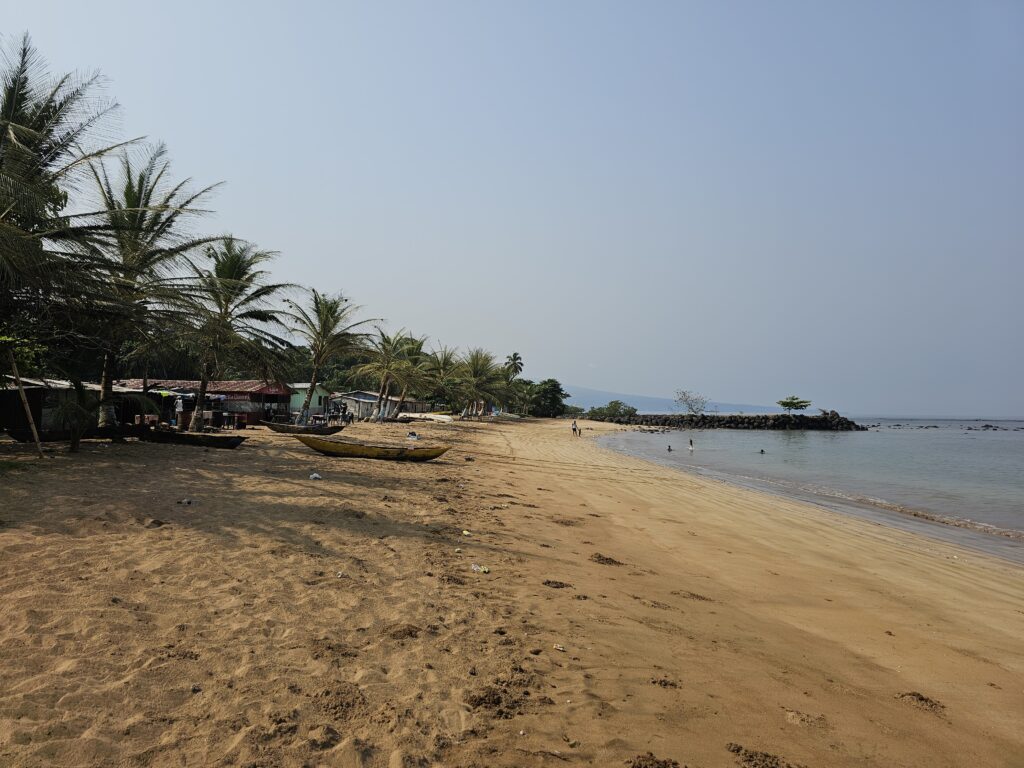
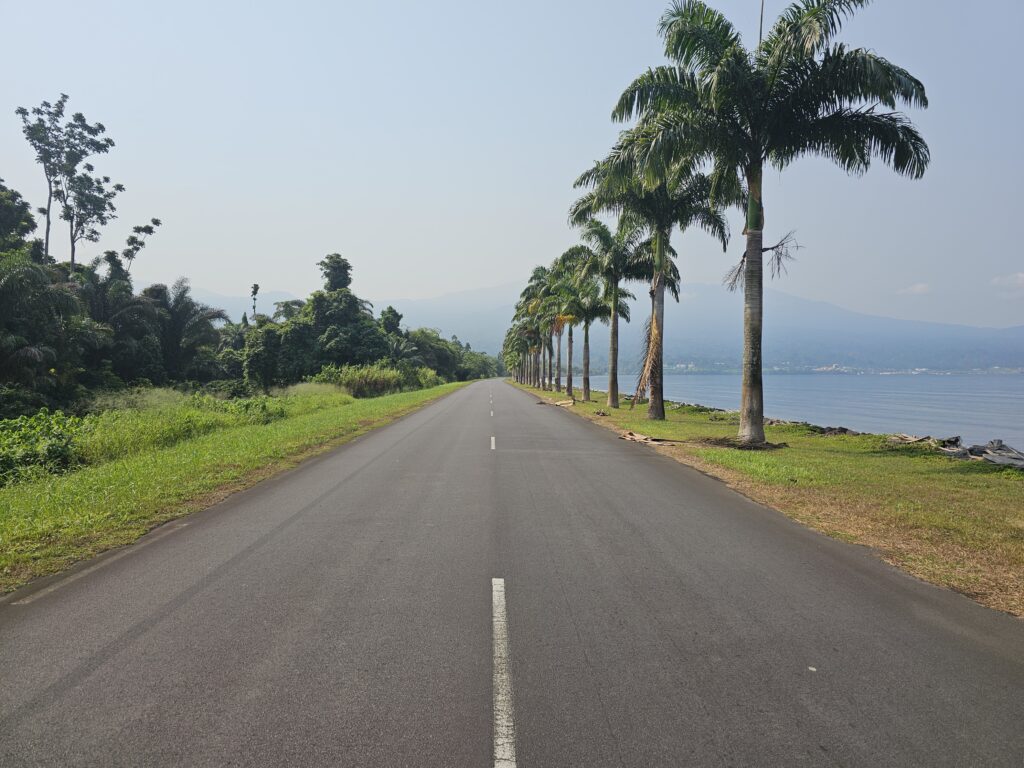
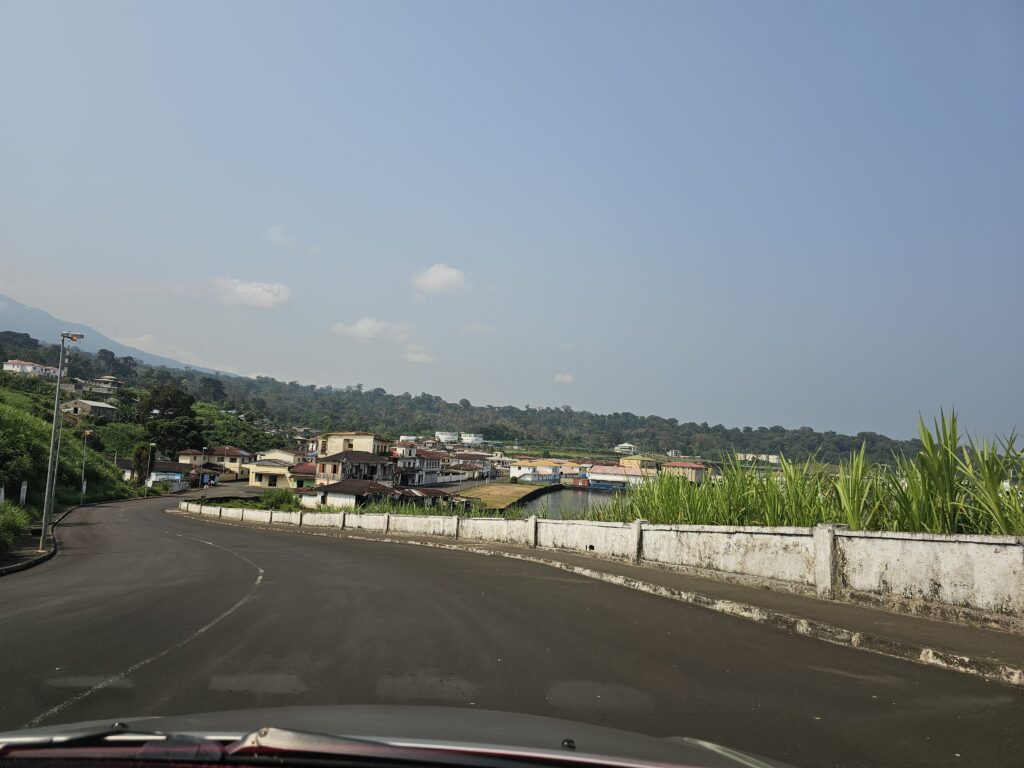
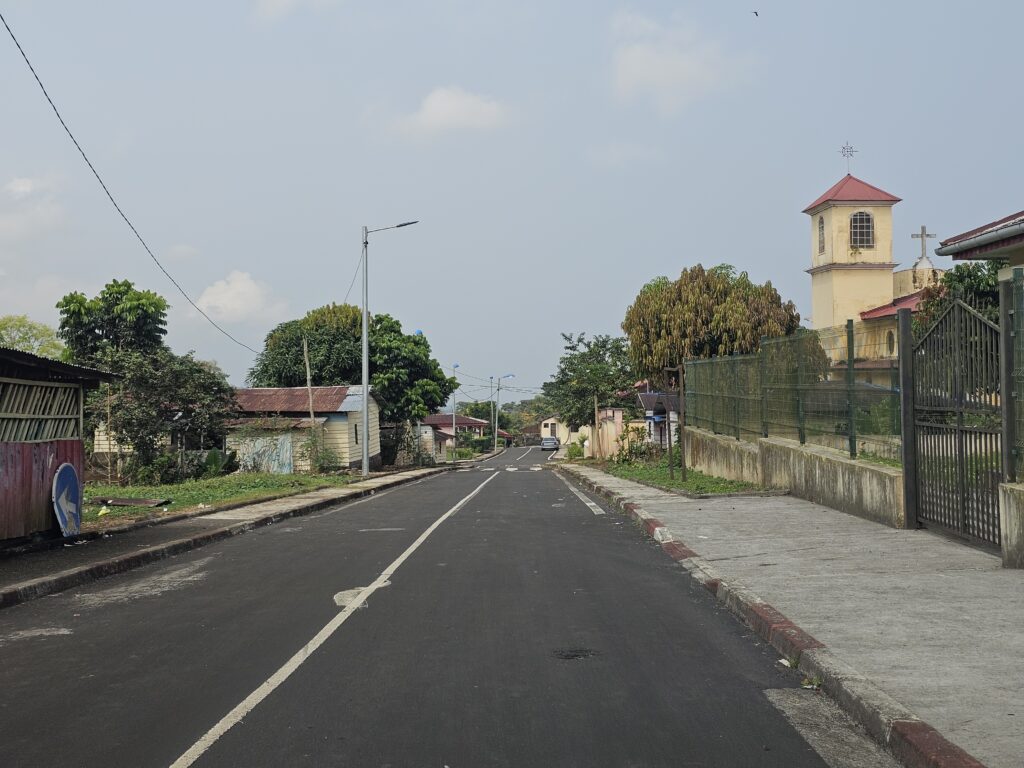
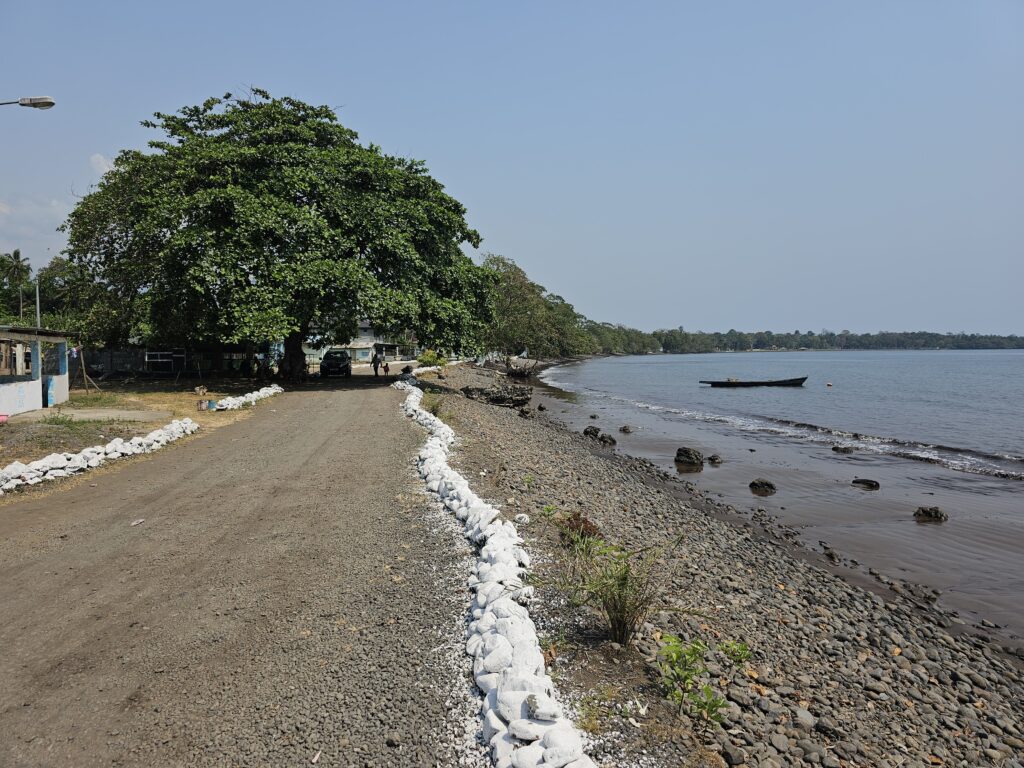
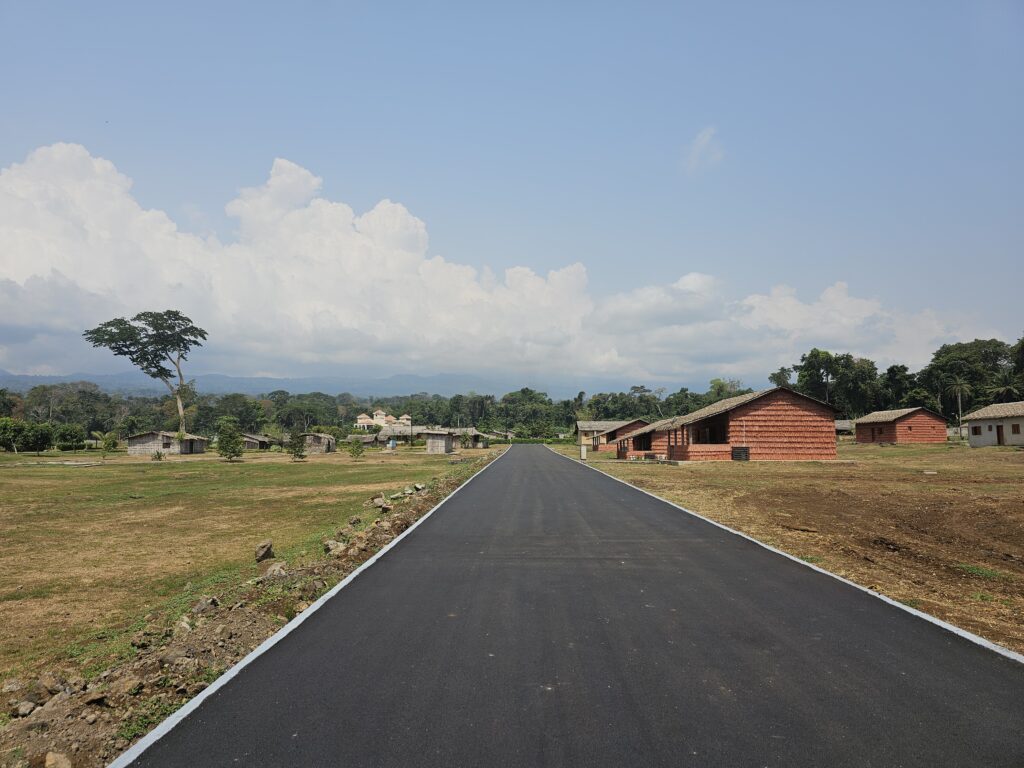
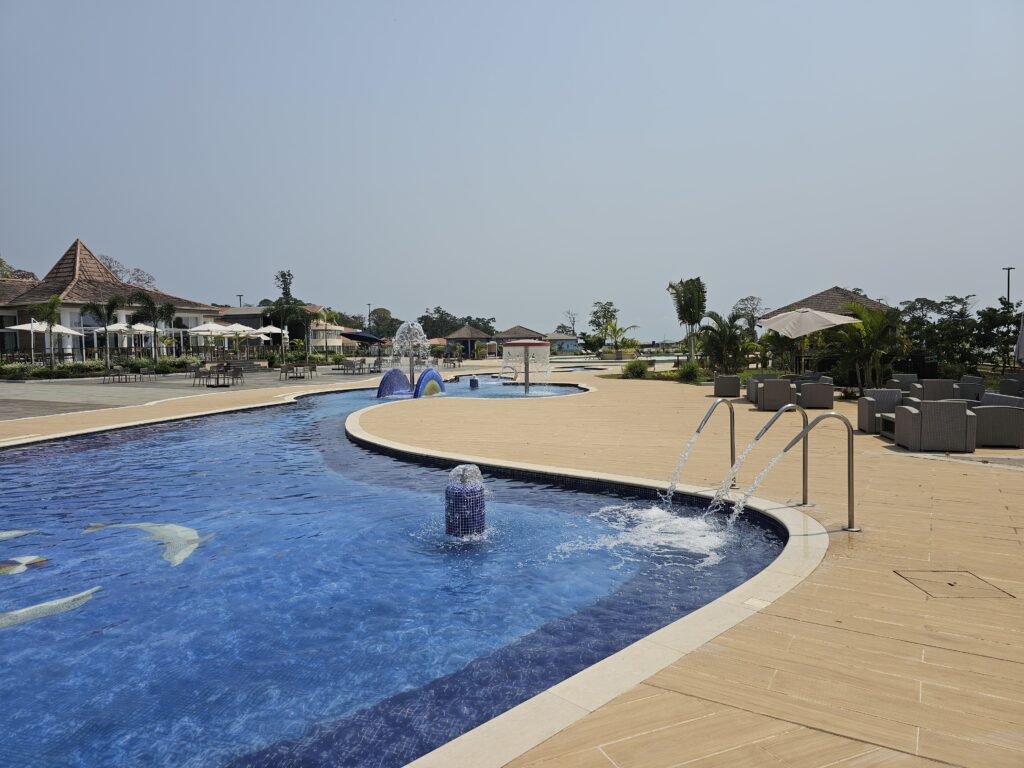
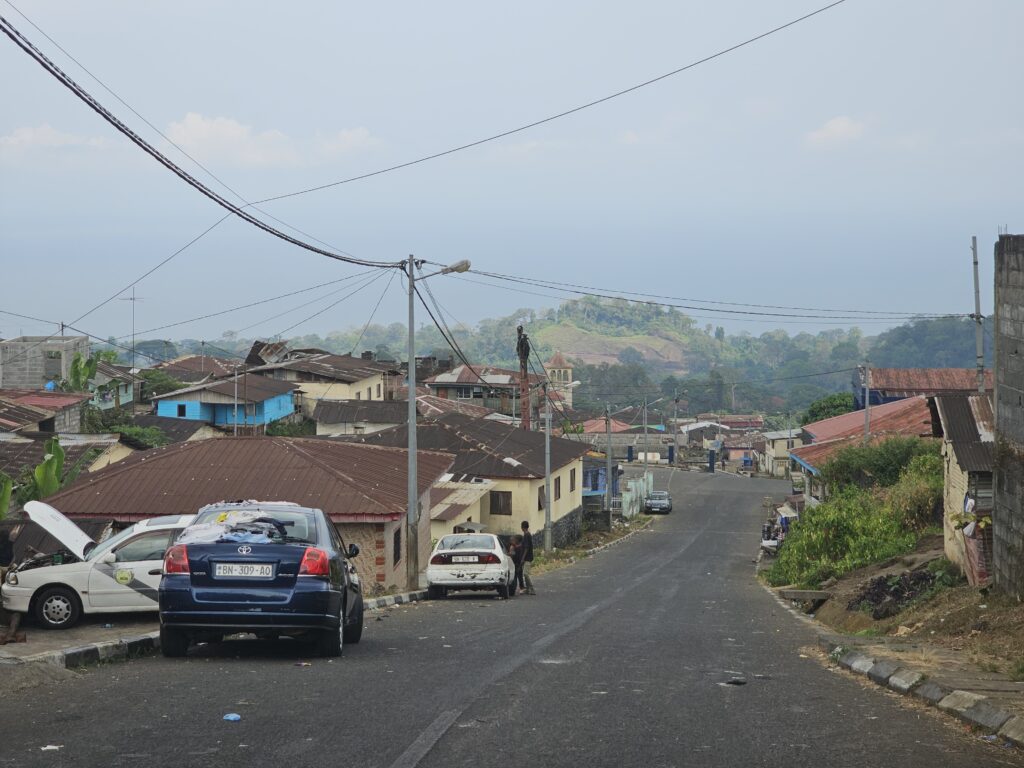
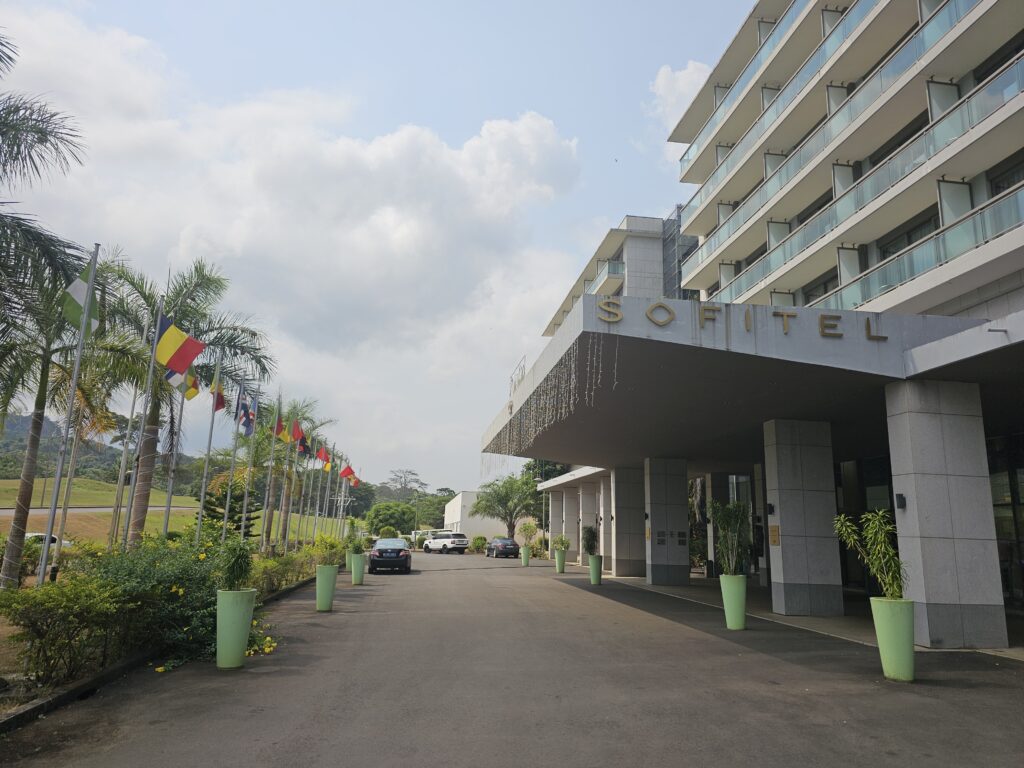
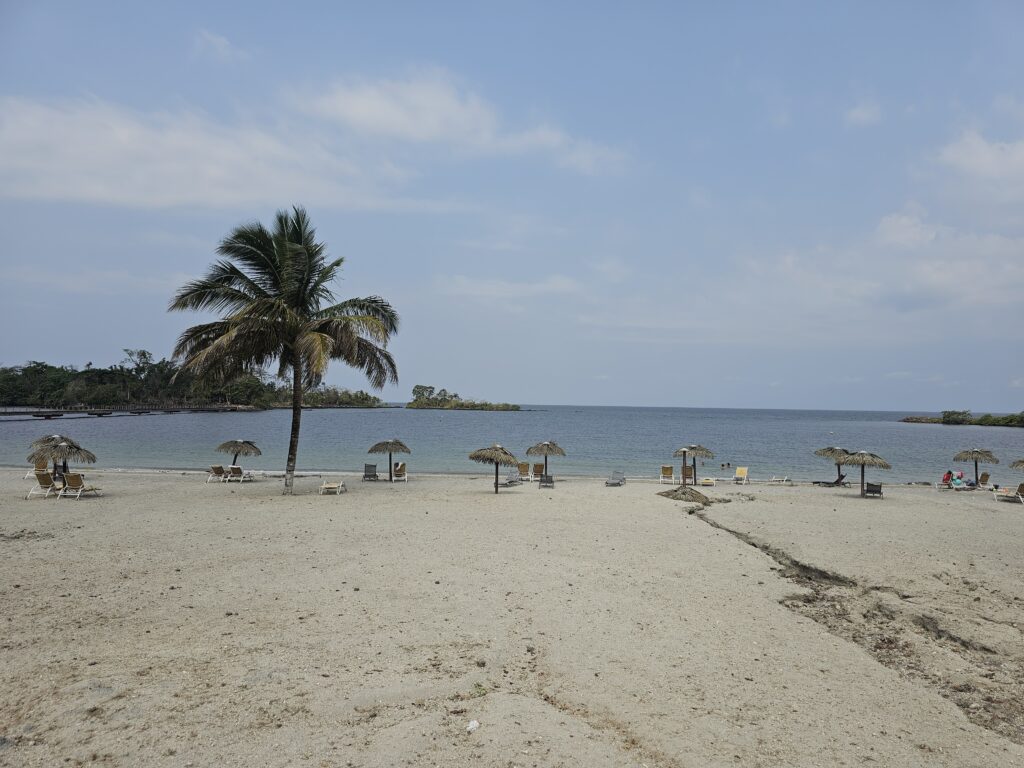
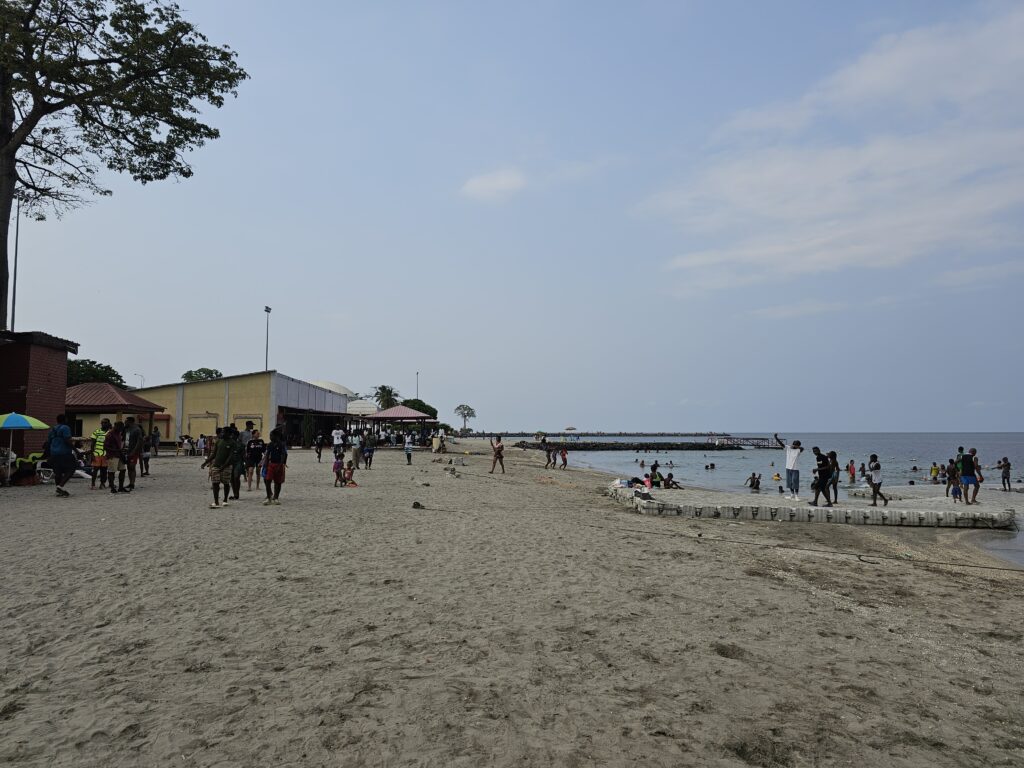
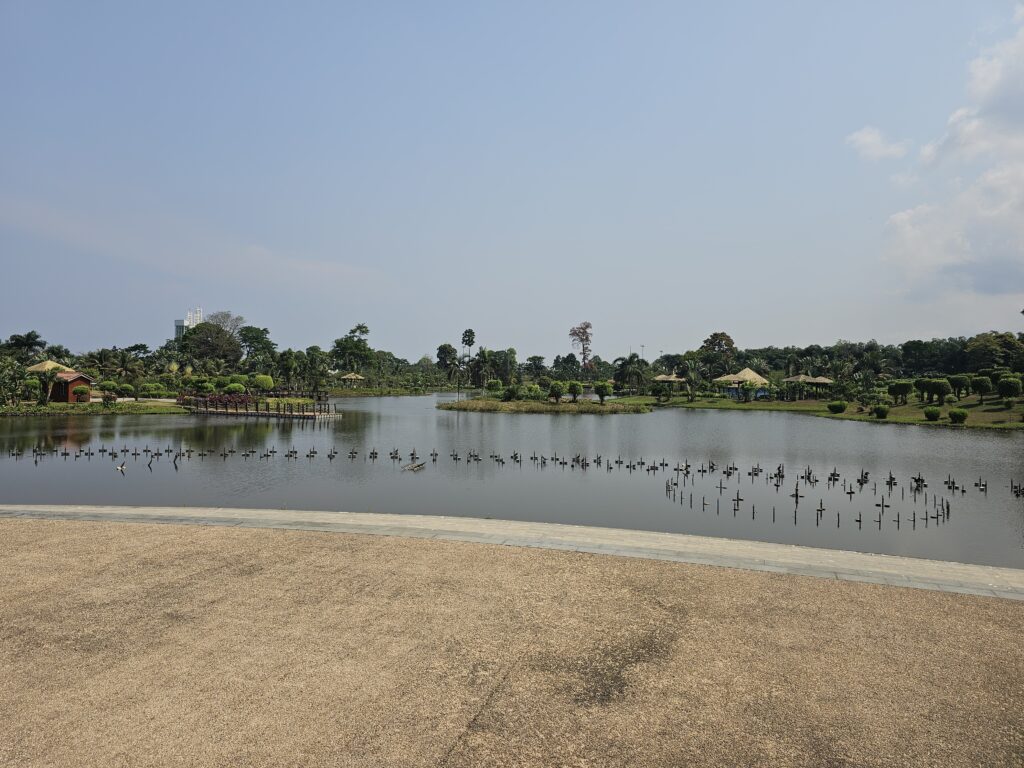
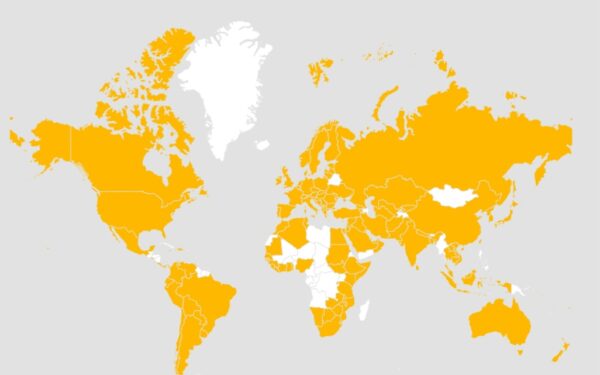
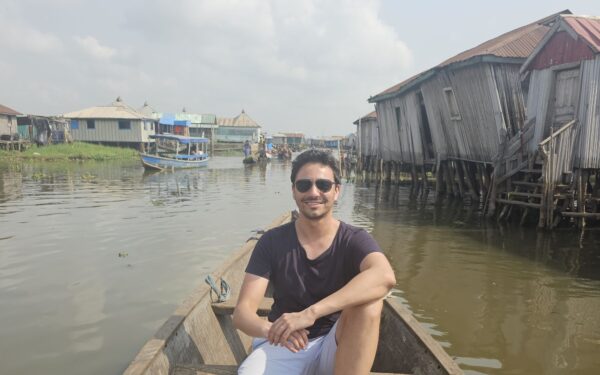
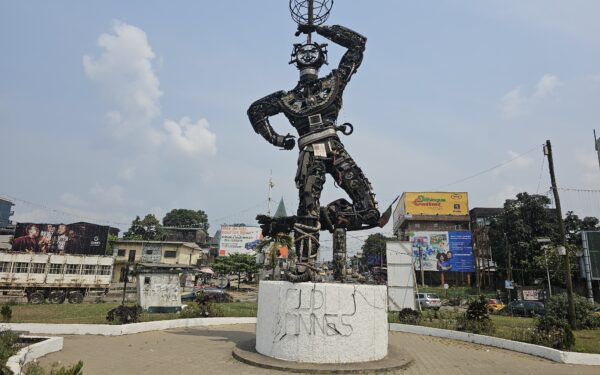
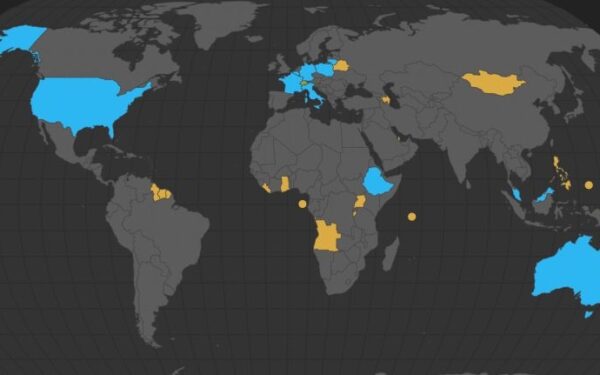
Love your trip reports. Recently been bitten by the travel bug and so much of useful stuff here. Good luck to you!!